New to homesteading? If so, you should consider these 50 homesteading hacks. They’re guaranteed to make your life a million times easier.
1. Start a Vermicomposting Bin
If you don’t have a lot of space on your homestead, you might want to consider starting a vermicomposting (worm composting) bin. You can tuck it away in a closet or basement!
2. Start Seedlings in Egg Cartons or Yogurt Cups
You can easily start your seedlings in egg cartons or yogurt cups. Bonus points if you use egg cartons, since they’re biodegradable and you won’t have to disturb the roots of your plants when you plant.
3. Use Wood Chips
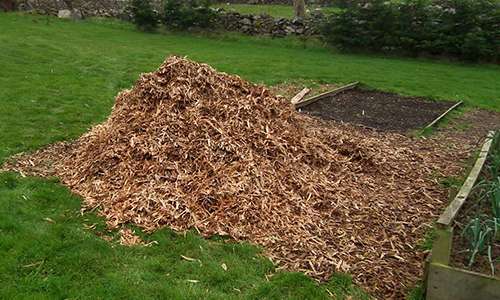 Do you have access to a wood chipper? Take advantage of those extra wood chips! You can use them to keep weeds down, to bed livestock, and to line pathways.
Do you have access to a wood chipper? Take advantage of those extra wood chips! You can use them to keep weeds down, to bed livestock, and to line pathways.
4. Make Homemade Cleaners
This is not only better for your health, but better for your budget. You can easily make your own homemade cleaners with things like vinegar, water, and essential oils (oregano is a powerful disinfectant!).
5. Use Motor Oil Bottles
Don’t throw out your used motor oil bottles! You can use them (and the oil!) for everything, from greasing machinery to staining wood.
6. Build Your Own Chicken Coop
Don’t get a store-bought coop! You can easily make one by following some simple plans.
7. Reuse Old Fabrics
Whether it’s socks, t-shirts, or towels, don’t throw those old fabrics away! Instead, use them around the house as shop rags.
8. Recycle Your Eggshells
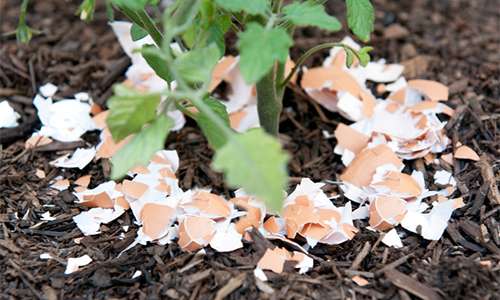 Grind them up and feed them to chickens for a boost of calcium, or pop them in the planting holes around your tomatoes to prevent blossom end rot.
Grind them up and feed them to chickens for a boost of calcium, or pop them in the planting holes around your tomatoes to prevent blossom end rot.
9. Save Your Nuts and Bolts
Hang on to all those extra nuts, bolts, and other pieces of hardware. Keep them organized in coffee cans in the garage!
10. Make DIY Nesting Boxes
Don’t run to the store for nesting boxes for your chicken coop. Make your own out of plastic totes or other recycled materials.
11. Save Your Bacon Grease
You can cook with old bacon grease, or you can use it to make your own hand soap. Genius!
12. DIY Your Laundry Soap
Easily make your own laundry soap with common ingredients like baking soda. You’ll pay pennies for your soap and you won’t have chemicals to worry about either.
13. Turn Your Backyard into a Bee Oasis
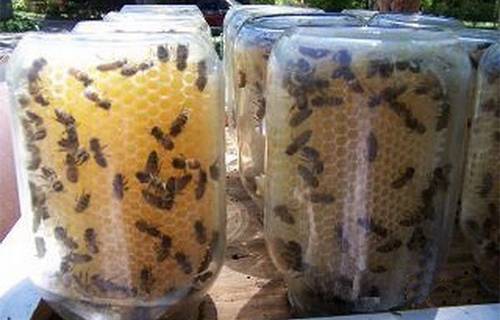 Grow a few wildflowers to make a pollinator-friendly garden. You can easily grow hardy wildflowers, like bee balm and coreopsis to attract these helpful friends.
Grow a few wildflowers to make a pollinator-friendly garden. You can easily grow hardy wildflowers, like bee balm and coreopsis to attract these helpful friends.
Related: DIY Beehive in a Jar
14. Reuse Old Soda Bottles
You can reuse old soda bottles and water bottles to make funnels for all kinds of purposes. They can be used to water your garden or as long-neck funnels to transfer windshield washer fluid into your car.
15. DIY Your Tomato Supports
You don’t have to invest in expensive tomato cages. Instead, use basic wooden stakes or twine to hold up your beefy Beefsteaks. You can also grow sunflowers next to your tomatoes and attach the tomatoes to the dense stalks.
16. Use an Online Seed Calculator
Use an online seed starting calculator to give you a good idea of when to plant. No more guesswork!
17. Make a DIY Seed Tape
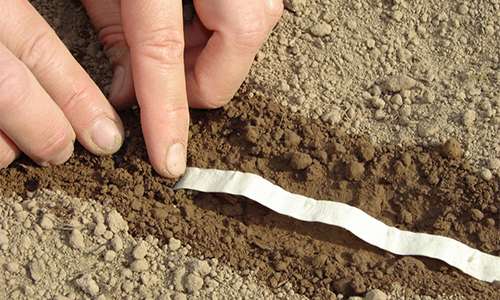 Don’t spend a ton of money on store-bought seed tape. You can make your own with simple materials like flour, toilet paper, and of course, some seeds.
Don’t spend a ton of money on store-bought seed tape. You can make your own with simple materials like flour, toilet paper, and of course, some seeds.
18. Get Rid of Flies Naturally
Need to ditch the flies? Put out some mint or basil. They’ll be gone in no time!
19. Use Soda Bottles as Planters
Cut off the top of your old soda bottles, and you can easily plant your seedlings inside to help you save some money.
20. Weigh a Pig Without a Scale
Did you know that you don’t even need a scale to figure out whether your hogs are ready for market? You just need to take two simple measurements – the heart girth and the length. Multiply the two, then divide by 400.
21. Make Compost Tea
If you want to use compost in your garden but you’ve already planted, an easy way to fertilize your plants is to make compost tea. You’ll just soak the compost in water and then use the solution.
22. Grow Vertically
Don’t grow out – grow up! You can make a vertical garden and cultivate your favorite plants, including green beans and potatoes, with things like pallets and basic trellises.
23. Use the Float Test to Check Your Eggs
Not sure if your eggs are safe to eat? Put them in a bowl of water. If they sink, they’re safe. If they float, toss them out.
24. Make a Natural Produce Wash
Don’t spend all kinds of money on those expensive store-bought produce washes. Instead, whip up a mixture of vinegar and water. That’s all you need to ditch the pesticides and dirt.
25. Repel Mosquitoes
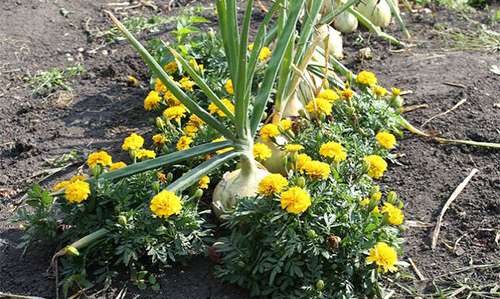 Mosquitoes make working in your garden a huge pain. Get rid of them by growing marigolds and garlic.
Mosquitoes make working in your garden a huge pain. Get rid of them by growing marigolds and garlic.
26. Save Your Mason Jars
Not only can extra mason jars be used for canning, but you can use them to store everything, from extra zip ties to dry beans, too.
27. Grow Vegetables from Scraps
There are all kinds of vegetables that can be grown from scraps, including celery and lettuce. You’ll save money and can do this anywhere, as long as you have a sunny windowsill.
28. Use Black Plastic in the Garden
Black plastic is a great mulch, as it will warm up the soil to prepare it for planting and will also keep out weeds.
29. Freeze Eggs
Chickens lay best during the summer and shut production down over the winter. Increase your egg supply by freezing the summer surplus. They’re great for scrambles and baked goods!
30. Save Old Bubble Mailers
Have a few extra bubble mailers? Use them to keep your saved seeds dry and ready for next year.
31. Use Apple Cider Vinegar
Apple cider vinegar can be used for just about anything, from preventing parasites to canning your favorite pickles.
32. Make DIY Feeders and Waterers
You can fashion a feeder or drink out of just about anything, including old 55-gallon drums and IBC totes. Don’t spend money on the pricey store-bought ones!
33. Save Your Coffee Grounds
Coffee grounds, when used in the garden, provide a rich source of nutrients.
34. Use Baby Oil to Prevent Frostbite
When you’re working outside in the cold, dab baby oil on your cheeks or other areas of exposed skin. Works like a charm!
35. Make a Sourdough Starter
All you need is flour and water. You’ll have fresh bread in no time!
Related: How To Make Yeast For Long-Term Storage
36. Make a DIY Cloche
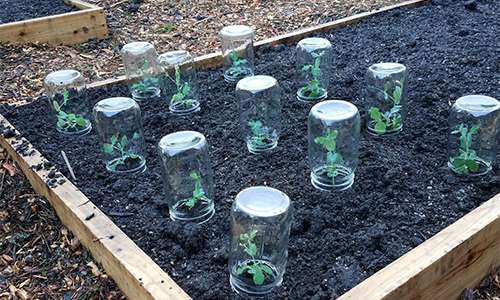 A cloche is basically a miniature greenhouse that sits atop your plants and protects them from late frost. Cut the top of a soda bottle and place it over your plants for the same effect.
A cloche is basically a miniature greenhouse that sits atop your plants and protects them from late frost. Cut the top of a soda bottle and place it over your plants for the same effect.
37. Save Your Sawdust
Sawdust can be used as animal bedding and is a great compost amendment.
38. Ditch the AC
When the summer heat gets too oppressive, don’t turn on the AC. Instead, put a bucket of ice in front of a box fan.
39. Prevent Chicken Parasites with Diatomaceous Earth
Sprinkle DE in the coop and your chickens won’t have to worry about lice, mites, or other parasites.
40. Feed Your Weeds to Livestock
Don’t toss those garden weeds! You can compost them or feed them back to chickens and pigs.
41. Plant in a Hay Bale
If your soil is poor, consider planting in a hay bale. This works especially well for crops that form deep roots, like potatoes.
42. Try Sheet Mulch
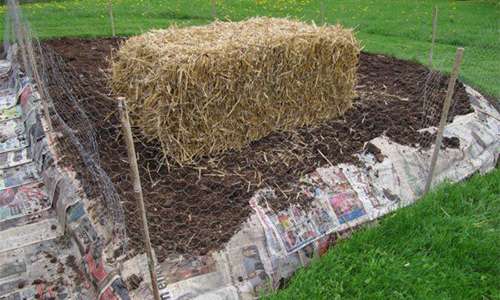 Lay down a bit of cardboard topped with some hay. It will repel weeds, hold moisture, and add nutrients back to the soil!
Lay down a bit of cardboard topped with some hay. It will repel weeds, hold moisture, and add nutrients back to the soil!
43. Prevent Green Tomatoes
Is a frost heading your way in a few weeks? If you want to avoid having tons of green tomatoes on your counter, top your tomato plants (cut the top portions off). This will encourage the plant to put more energy into ripening the fruits it already has, rather than pushing out new growth.
44. Use a Plastic Tote as a Chick Brooder
As long as you don’t have that many chicks, this is a great solution when your birds are young.
45. Consider Keeping a Rooster
Some people don’t like raising roosters because they can be aggressive. But there are all kinds of reasons to raise them too – such as free predator protection!
46. Make Your Own Cheese
Cheesemaking is a time-intensive process, but did you know you can make your own cheese with two simple ingredients – whole milk and vinegar?
Related: My First Batch Of Canned Cheese
47. Feed Chickens for Free
You can provide your chickens with unlimited chicken food by growing your own fodder – or allowing them to free-range.
48. Use Garlic as a Natural De-wormer
Garlic can be used for just about any species of livestock to keep internal parasites away.
49. Made an All-Natural Weed Killer
Combine dish soap, vinegar, and water for an easy, effective weed killer.
50. Use a Clothesline
Get rid of the dryer – you have everything you need right outside. And yes, you can use a clothesline to dry your clothes even in the winter months.
Regardless of whether you’re a newbie homesteader, or you’ve been in the game for a while, these tips should help you be successful.
You may also like:
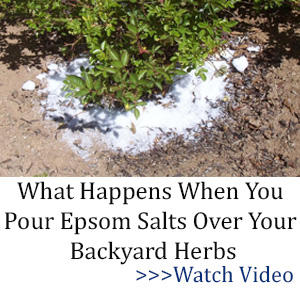 How to Grow Potatoes in Shopping Bags for an Extended Harvest
How to Grow Potatoes in Shopping Bags for an Extended Harvest
The Self-Sufficient Backyard (Video)
How to Make Firebricks (fire logs) and Wood Stove Logs for Free!
Baking Soda – 112 Uses (WWII Series)

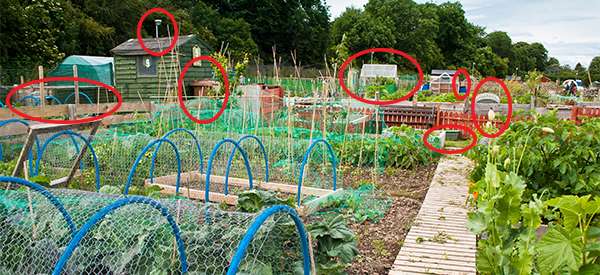




















I love reading your articles. Progress is okay but I think we need to get back to the basics!
That compost tea tastes terrible!
LMAO!!!
lol… maybe add a bit of milk…lol
Reminds me of a neighbor I had 20 years back, when the waitress at the coffee shop asked him for some horse manure for her strawberry bed, he said heck NO you don’t want horse manure. She asked him what he put on his strawberries, and of course he said cream and a little sugar……
Very informative,I’ve learned things I did not know or never heard of .THANK YOU VERY MUCH
If you are measuring the heart of a pig doesn’t that necessarily mean that you have already killed the pig or am I missing something?
If one is an experienced pig farmer, wouldn’t just eyeballing the pig be a sufficient indicator whether the pig is ready for market or not?
Heart Girth (not the heart itself) Means the area of the pig just behind the front shoulders
Aaah. That clears it up. The way it read, I thought it meant to measure the girth of the heart itself, by the length of the organ itself the sum squared but the divided by 400 should have been a clue. Must be a little slow this morning.
Of course, a pig farmer would know immediately what heart girth meant. The other question then becomes: How do you get the pig to hold still while you are doing the measuring? I guess, again, a pig farmer would know how to make a pig hold still for market measuring.
As almost everyone can tell, I am not quite ready to open The Left Coast Chuck Pig Farm.
feed it some chow and then measure
Inches or centimeters?
Made an All-Natural Weed Killer
Combine dish soap, vinegar, and water for an easy, effective weed killer.
I use dish soap 1/2 cup
1 gal vinegar
2cups of salt
This works. I have used it for several years now. I don’t use that much soap. I use ten drops. The dish soap dissolves any oily coating the plant may have for protection (you know, dissolves caked on grease without drying out your hands?) The salt and vinegar is what kills the plants.
When the Romans sacked a town that they wanted to obliterate, they threw salt all over the ground. If you read about the destruction of Carthage, the last line is that they sowed salt on the lands.
KDC: Dish soap and vinegar added together will cancel each other out. Base= dish soap, acid= vinegar…Simple chemistry
I don’t add any soap, just dilute the vinegar and squirt it around the base of the plants so that it kills the roots.. I do dig out poison oak and the squirt a stronger vinegar mixture over the hole to kill any remaining root ends..
Cook with bacon grease? That’s funny. Every month I have a ‘cook bacon day’ in the garage and store it for fried corn, cornbread, etc.
One of the best things I did is install a retractable clothesline on the covered porch from pole to pole.
No weed eating around it and I have dried clothes during a sprinkle rain. I love it.
One of my Uncles started a farm in the 1930s, my Dad said when they went to visit everybody kept their coats on because the siding on their old farmhouse had rotted and shrunk so much the north wind blew papers off the table and all they had for heat was a cast iron cook stove. If I was young I would become a homesteader, what a cool thing to do. Good article, some ideas I’ll try out, but if I started a homestead now by the time it was running well I’d be too dead to enjoy it. Shoot, it’s more than enough work to keep the garden weeded and can a few beans and maters.
My latest homestead hack involved dykes, baling wire,and a tractor, you can never have enough baling wire.
Before zip ties and JBWeld, bailing wire and chewing gum(actually plumber’s putty) used to hold the world together — at least the world that my family knew.
Sam Bonham lived about 30 miles down the road from me, died some 30 years ago. He wasn’t a homesteader, his ranch house was visible from I30, the tree lined front drive a quarter mile long, the house a 2 story sort of colonial and big. There was a 40 foot box trailer parked out front with the JBWeld logo on it. He was working as a welder when he invented JBWeld and became fabulously wealthy. His fine product has saved us all a lot of trips to the repair shop.
Ice in front of a box fan sounds like a bad idea. You’ll be adding a lot of humidity to the house and will be more miserable than before.
Depends on where you are, Spike. If you are in Tucson in September, moving the humidity from 10% to 13% might be a big improvement. The early settlers in the Southwest used to hang wet sheets by the windows to get cool air in the house. The same principle was used in what we called “swamp coolers.”
Before air conditioning was installed in every new home, many homes had “swamp coolers” on the roof. There were evaporative mats inside and a water line up the outside of the house to the swamp cooler kept them damp when running. Yes, the humidity went up, but the temperature also went down. They really did make a difference in the inside temperature. The correct name, of course, was evaporative cooler.
Before the days of a/c and reliable radiators and auto cooling systems, no experienced traveler in the Southwest drove between towns without at least one and preferably two one-gallon canvas water bags handing on the front bumper. The air flowing over the damp canvas actually made the water quite cool. It also served to fill up the radiator after the long climb up to Needles or the long climb up from San Berdoo to Barstow, or the very long climb up to Cheriaco Summit on the way to Blythe.
I had a job in El Centro one blistering, hot summer day. The attorney and I had a window swamp cooler for the car. In those days only a few high end cars had actual a/c in the car. The swamp cooler worked while there was ice in it, but we figured we would never get to El Centro that day if we kept the swamp cooler filled with ice. We just used the 4-65 system for cooling the car, rolled down four windows and drove 65 mile an hour.
That’s why guys my age have a tendency to have skin cancer on the left side of their head and face and left arm. Drove around in the summertime with the window rolled down and your arm on the sill, getting all kinds of UV exposure.
Hi somebody is plagiarising your work
https://ethan2k21.wordpress.com/2020/07/28/50-homesteading-hacks-you-should-know/
If you have a wood chipper, or know someone who does, you can chip fallen limbs and branches and use the chips as mulch. Mulch is a cost/time saver because it cuts down on weeding or applications of herbicides.